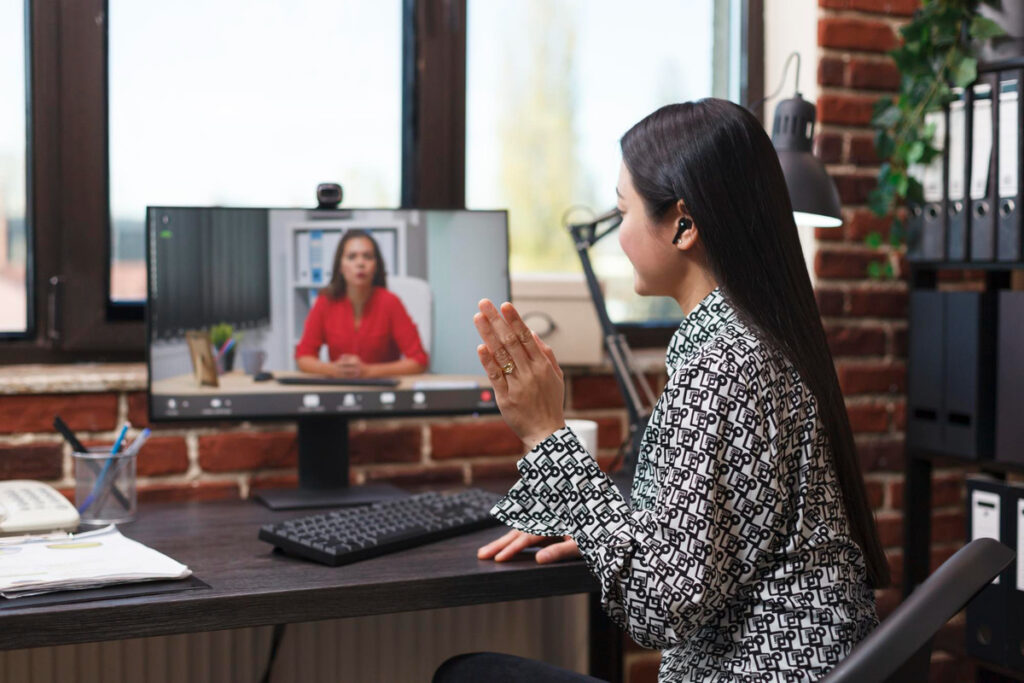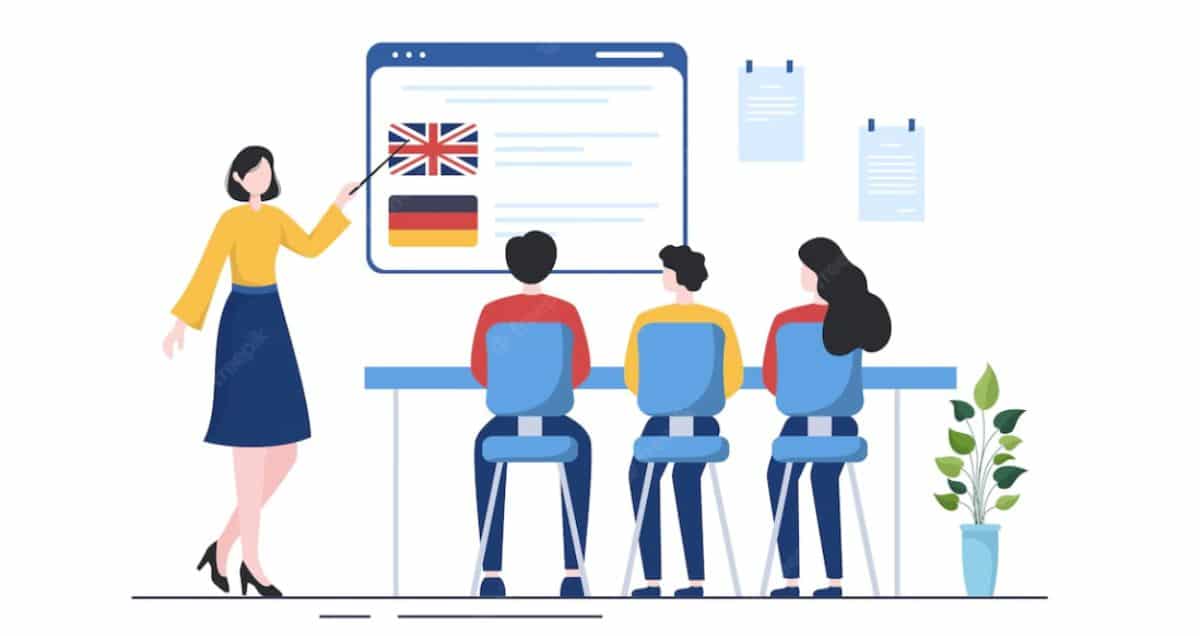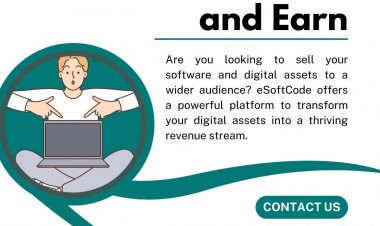Virtual Interview Meaning: Master the Art of Online Interviews in 2025
Introduction In the age of digital transformation, interviews have evolved just like everything else in the workplace. Gone are the days when a job interview meant dressing up, traveling to the company’s office, and sitting across the table from a recruiter. Today, hiring happens across screens, and understanding the virtual interview meaning has become essential […] The post Virtual Interview Meaning: Master the Art of Online Interviews in 2025 appeared first on Chegg India.

Introduction
In the age of digital transformation, interviews have evolved just like everything else in the workplace. Gone are the days when a job interview meant dressing up, traveling to the company’s office, and sitting across the table from a recruiter. Today, hiring happens across screens, and understanding the virtual interview meaning has become essential for both job seekers and employers.
This article will walk you through the complete concept of virtual interviews, including what they are, how they work, their benefits and drawbacks, expert tips, and everything in between. Whether you’re preparing for your first online interview or managing a virtual hiring process as a recruiter, this guide will help you navigate with confidence.
What is the Meaning of Virtual Interview?
The term virtual interview refers to a job interview that takes place remotely using video conferencing tools such as Zoom, Google Meet, Microsoft Teams, or specialized hiring platforms. Unlike traditional interviews, both the candidate and the interviewer join from separate locations using a stable internet connection and digital devices.
Virtual interviews can be conducted live (real-time conversation) or pre-recorded (asynchronous, where candidates respond to set questions without an interviewer present). Despite being remote, the objective remains the same—to evaluate a candidate’s suitability for a job role based on their skills, experience, and communication abilities.

How Do Virtual Interviews Work?
A virtual interview follows a simple yet structured process. First, the recruiter schedules the interview and sends the candidate a meeting link via email or the hiring portal. This link contains the date, time, and the platform being used for the interview.
On the day of the interview, both parties join the session using their devices. The recruiter conducts the interview much like a face-to-face conversation, asking questions and assessing the responses. If it’s a pre-recorded interview, the candidate is given a set of questions and must record answers within a specific time limit.
The entire process is often supported by tools like screen sharing, digital whiteboards, and real-time document collaboration to evaluate technical or creative skills.
Why Are Companies Switching to Virtual Interviews?
Companies have several reasons for shifting to virtual interviews. One major factor is cost reduction. Online interviews eliminate travel expenses, lodging costs, and venue bookings, making the hiring process more budget-friendly.
Speed is another big advantage. Scheduling becomes easier, and decisions can be made faster since interviews can be slotted back-to-back without physical logistics.
Virtual interviews also allow companies to reach a wider talent pool. Recruiters are no longer restricted to local applicants—they can now hire from different cities, states, or even countries. This opens doors to more diverse talent and better fit for specialized roles.
Types of Virtual Interviews
To fully understand the virtual interview meaning, it’s important to explore the various formats used by companies today. Each type offers a different approach to remote hiring and serves unique purposes based on the job role, company size, and hiring stage.
1. Live Video Interviews
One of the most common formats under the umbrella of virtual interviews, live video interviews take place in real-time using platforms like Zoom, Google Meet, or Microsoft Teams. The recruiter and the candidate interact face-to-face through video, simulating a traditional in-person interview. This type of interview allows for immediate feedback, follow-up questions, and dynamic conversation—making it ideal for assessing communication skills, confidence, and presence. When exploring virtual interview meaning, this format is often the first that comes to mind.
2. Pre-Recorded Interviews
Also known as asynchronous interviews, pre-recorded interviews allow candidates to record answers to a set of predefined questions. These responses are submitted to the hiring team for review at their convenience. This format is especially useful when screening a high volume of applicants, as it saves time and enables standardization. In understanding the virtual interview meaning, this type reflects the growing need for flexibility and efficiency in the hiring process.
3. AI-Enhanced Interviews
Artificial intelligence has added a new layer to the virtual interview meaning. AI-enhanced interviews use machine learning to analyze candidates’ facial expressions, speech patterns, tone of voice, and even keyword usage. These interviews may be either live or pre-recorded. The AI provides insights or scores that assist recruiters in making more objective decisions. While still debated for fairness, this format is becoming increasingly common in large-scale hiring processes.
4. Panel Interviews
Panel interviews involve multiple interviewers joining the same virtual meeting with one candidate. This format is often used for senior roles or positions that require cross-department collaboration. Each panelist may focus on a different aspect of the candidate’s profile—such as technical skills, team fit, or leadership qualities. When grasping the virtual interview meaning, panel interviews showcase how remote tools can still support collaborative evaluation.
5. Technical Task Interviews
For roles in IT, engineering, design, or data science, virtual interviews often include live coding tasks, design evaluations, or screen-sharing to solve real-time problems. These task-based sessions demonstrate how the virtual interview meaning goes beyond just talking—it can also include doing, building, and showcasing your work remotely.

Benefits of Virtual Interviews
Virtual interviews have rapidly become a preferred method for modern hiring—and for good reason. They offer a range of benefits that streamline the recruitment process for both employers and candidates. The shift to remote interviews isn’t just about necessity; it’s about efficiency, accessibility, and adaptability.
1. Convenience and Time-Saving
One of the most significant advantages is convenience. Candidates no longer need to travel to an office, take time off work, or navigate traffic and unfamiliar locations. Everything can be handled from the comfort of their own space. Interviewers, on the other hand, can manage multiple interviews in a day without stepping away from their desks.
This saves considerable time for both parties. With digital scheduling tools and calendar integrations, interviews can be arranged quickly—even across different time zones—speeding up the entire hiring process.
2. Cost-Effective for Everyone Involved
From a financial perspective, virtual interviews dramatically cut down costs. For companies, there’s no need to book meeting rooms, arrange for hospitality, or reimburse travel expenses for out-of-town candidates. For candidates, the financial burden of travel, food, or lodging is completely eliminated. Understanding the virtual interview meaning includes recognizing how it supports budget-conscious recruitment without compromising quality.
Startups, small businesses, and nonprofits especially benefit from the affordability of virtual interviews, allowing them to access high-quality talent without increasing operational expenses.
3. Improved Accessibility and Inclusivity
Remote interviews help level the playing field by making job opportunities more accessible to a wider range of candidates. Those with mobility challenges, family responsibilities, or who live in remote or rural areas can participate without the added stress of traveling.
This format opens doors for a more diverse talent pool, allowing organizations to attract and engage individuals from varied backgrounds, cultures, and regions. It promotes equity and helps build more inclusive teams.
4. Recordings Allow for Better Evaluation
Digital platforms often allow for interviews to be recorded, with the candidate’s permission. These recordings are valuable for hiring managers who may want to revisit specific responses or share the interview with other team members for collaborative evaluation.
This not only supports more objective decision-making but also ensures that important details aren’t missed during fast-paced conversations.
5. Flexible Formats for Every Hiring Stage
Virtual interviews come in different formats, including live video calls, pre-recorded responses, and task-based assessments. This flexibility allows companies to customize their hiring process according to the role and stage of recruitment.
For example, pre-recorded interviews can be used to screen a high volume of applicants quickly, while live sessions can be reserved for more advanced stages. Technical roles may also involve screen sharing or coding assessments to test real-time problem-solving skills.
6. Enhances Employer Branding
Companies that provide a smooth, well-organized online interview experience leave a strong impression on candidates. It shows that the organization is modern, tech-savvy, and respectful of applicants’ time and comfort.
A positive candidate experience during the interview process can boost the company’s reputation, making it more attractive to top talent. It also increases the likelihood of candidates accepting job offers and referring others to apply.
7. Business Continuity in Crisis Situations
Virtual interviews ensure that hiring doesn’t stop when unexpected events occur. During the COVID-19 pandemic, organizations that understood the virtual interview meaning and adopted it early continued to fill critical positions while others struggled to adapt. Even in situations like natural disasters, civil unrest, or global conflicts, virtual interviews allow hiring processes to continue uninterrupted.
The virtual interview meaning extends beyond just replacing face-to-face meetings with video calls. It represents a smarter, more efficient, inclusive, and flexible way to hire talent in today’s competitive job market. For both employers and job seekers, embracing virtual interviews offers significant advantages—from saving time and money to promoting accessibility and better decision-making. As remote work and global hiring trends continue to grow, the benefits of virtual interviews will only become more evident and widespread.

Challenges of Virtual Interviews
Despite the convenience, virtual interviews come with their own set of challenges. One major issue is technical difficulty. Poor internet connection, malfunctioning microphones, or software glitches can disrupt the flow of conversation and affect the outcome unfairly. Another challenge is the lack of non-verbal cues. In-person interviews allow recruiters to observe body language, facial expressions, and energy levels more accurately. These subtle signs can get lost on camera.
Candidates may also find it hard to build rapport online, especially if they’re not used to speaking on video calls. And there’s always the risk of distractions—background noise, interruptions, or a messy environment—impacting the candidate’s performance.Additionally, some candidates face a digital divide. Not everyone has access to high-speed internet, a good camera, or a quiet space to attend interviews, which can create inequality.
Tools and Technology Used in Virtual Interviews
To conduct a successful virtual interview, the following tools are commonly used:
- Video Conferencing Platforms: Zoom, Microsoft Teams, Google Meet, Skype
- Scheduling Tools: Calendly, Outlook Calendar, Google Calendar
- Interview Management Systems: HireVue, SparkHire, VidCruiter
- Assessment Platforms: Codility, HackerRank, TestGorilla
- Basic Equipment: Laptop or smartphone with webcam, headset with mic, ring light, and high-speed internet connection
Both candidates and recruiters should ensure these tools are tested and functioning before the interview to avoid last-minute hiccups.
Read More: Phone interview Questions
How to Prepare for a Virtual Interview
For Candidates:
- Choose a distraction-free, well-lit space with a plain background
- Dress professionally as you would for an in-person meeting
- Test your equipment (camera, mic, internet) the day before
- Practice common interview questions on camera to get comfortable
- Keep your resume, notes, and portfolio easily accessible
- Use headphones to avoid echo or background noise
For Recruiters:
- Share clear instructions on the interview platform
- Inform candidates whether the session will be recorded
- Prepare a question checklist and evaluation sheet
- Keep the interview structured and on time
- Stay patient and offer grace if technical issues arise
Virtual Interview Etiquette
Being remote doesn’t mean being casual. Follow proper etiquette to create a professional impression.
- Always log in 10-15 minutes early
- Greet the interviewer with a smile and confident tone
- Make eye contact by looking into the camera lens, not at your screen
- Mute yourself when the other person is speaking to avoid background noise
- Avoid multitasking during the session
- End the interview with a polite thank you and inquire about next steps
Post-Interview Steps for Candidates
Once the virtual interview ends, send a follow-up email thanking the interviewer for their time. Mention something specific from the conversation to show genuine interest. If you’re waiting for a response, follow up politely after 7-10 days if you haven’t heard back.
Common Mistakes to Avoid in Virtual Interviews
- Not testing your tech in advance
- Joining from a noisy or messy environment
- Reading from a script, which sounds robotic
- Interrupting the speaker due to lag or delay
- Dressing too casually
- Forgetting to charge your device before the call
- Ignoring your background and lighting
Avoiding these mistakes can help you stand out for the right reasons.

How Virtual Interviews Compare to In-Person Interviews
While both formats aim to assess the same qualities, virtual interviews offer flexibility and accessibility. In-person interviews allow for better rapport-building and observation of non-verbal communication. However, virtual interviews often speed up the hiring process and are more scalable, especially when hiring across geographies.
Future of Virtual Interviews
The concept of virtual interviews is rapidly evolving. In the coming years, we can expect:
- Greater use of AI for interview scoring and screening
- Virtual reality (VR) interviews offering immersive environments
- Voice analysis to detect confidence and communication patterns
- Real-time transcription and auto-translation tools
- More emphasis on skills-based assessments than resumes
As remote work becomes the norm, virtual interviews will become more structured, intelligent, and accessible to everyone.
Conclusion
Understanding the virtual interview meaning is no longer optional—it’s a necessity in today’s rapidly evolving hiring landscape. As companies and candidates embrace remote communication, virtual interviews have emerged as a powerful, efficient, and inclusive way to connect talent with opportunity.
Whether you’re a job seeker preparing for your first online interview or an HR professional adapting to digital recruitment, mastering the dynamics of virtual interviews can give you a clear edge. From preparation and technology setup to communication and follow-up, every step plays a critical role in shaping the final impression.
In 2025 and beyond, virtual interviews are set to dominate the hiring process across industries. With the right mindset, proper tools, and a bit of practice, you can turn every virtual conversation into a career-changing opportunity. Embrace the shift, stay adaptable, and let your skills shine—on or off screen.
Frequently Asked Questions(FAQ’s)
What is the virtual interview meaning in simple terms?
The virtual interview meaning refers to an interview conducted online through video conferencing platforms like Zoom, Google Meet, or Teams, instead of in-person. It allows candidates and recruiters to connect remotely for hiring discussions.
How does understanding virtual interview meaning help job seekers?
Knowing the virtual interview meaning helps job seekers prepare better for remote hiring. It guides them in setting up the right environment, using proper etiquette, and confidently handling interviews through digital platforms.
Is the virtual interview meaning the same as video call interview?
While closely related, virtual interview meaning covers all remote interview types, including live video calls, pre-recorded responses, and AI-assisted evaluations. A video call interview is one specific form of a virtual interview.
Why is it important to know the virtual interview meaning in 2025?
Understanding the virtual interview meaning in 2025 is crucial because most companies now rely on online hiring methods. Knowing the process ensures you’re well-prepared, professional, and competitive in the digital job market.
Does the virtual interview meaning include AI-based assessments?
Yes, the virtual interview meaning can include interviews that use AI to evaluate tone, answers, and facial expressions. These assessments are increasingly used for screening and decision-making in remote hiring.
How can I master virtual interview meaning and ace the process?
To master the virtual interview meaning, focus on technical readiness, body language, clear communication, and a professional digital setup. Practicing in advance can significantly boost your confidence and success rate.
The post Virtual Interview Meaning: Master the Art of Online Interviews in 2025 appeared first on Chegg India.



























